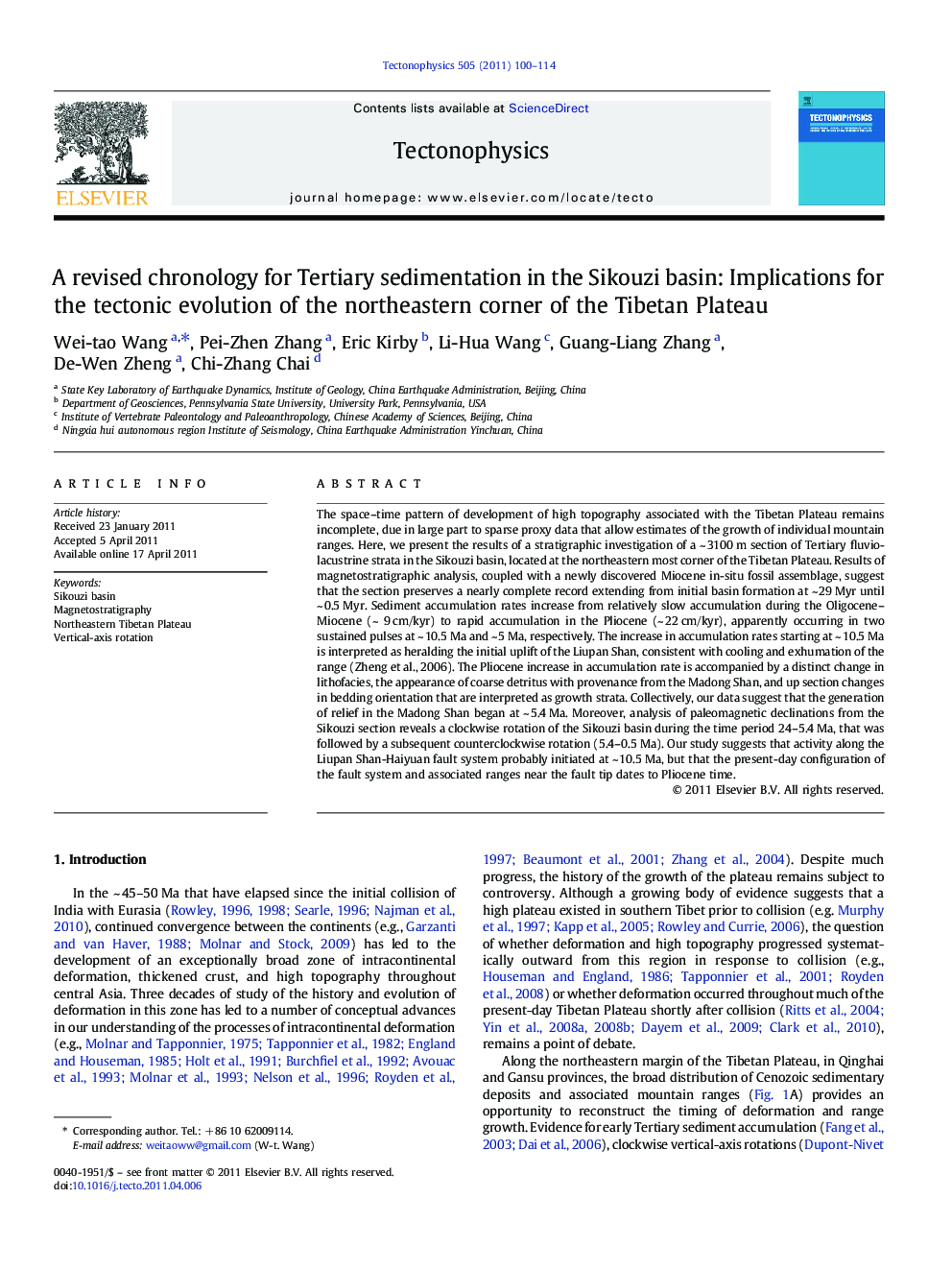| Article ID | Journal | Published Year | Pages | File Type |
|---|---|---|---|---|
| 4693117 | Tectonophysics | 2011 | 15 Pages |
The space–time pattern of development of high topography associated with the Tibetan Plateau remains incomplete, due in large part to sparse proxy data that allow estimates of the growth of individual mountain ranges. Here, we present the results of a stratigraphic investigation of a ~ 3100 m section of Tertiary fluvio-lacustrine strata in the Sikouzi basin, located at the northeastern most corner of the Tibetan Plateau. Results of magnetostratigraphic analysis, coupled with a newly discovered Miocene in-situ fossil assemblage, suggest that the section preserves a nearly complete record extending from initial basin formation at ~ 29 Myr until ~ 0.5 Myr. Sediment accumulation rates increase from relatively slow accumulation during the Oligocene–Miocene (~ 9 cm/kyr) to rapid accumulation in the Pliocene (~ 22 cm/kyr), apparently occurring in two sustained pulses at ~ 10.5 Ma and ~ 5 Ma, respectively. The increase in accumulation rates starting at ~ 10.5 Ma is interpreted as heralding the initial uplift of the Liupan Shan, consistent with cooling and exhumation of the range (Zheng et al., 2006). The Pliocene increase in accumulation rate is accompanied by a distinct change in lithofacies, the appearance of coarse detritus with provenance from the Madong Shan, and up section changes in bedding orientation that are interpreted as growth strata. Collectively, our data suggest that the generation of relief in the Madong Shan began at ~ 5.4 Ma. Moreover, analysis of paleomagnetic declinations from the Sikouzi section reveals a clockwise rotation of the Sikouzi basin during the time period 24–5.4 Ma, that was followed by a subsequent counterclockwise rotation (5.4–0.5 Ma). Our study suggests that activity along the Liupan Shan-Haiyuan fault system probably initiated at ~ 10.5 Ma, but that the present-day configuration of the fault system and associated ranges near the fault tip dates to Pliocene time.
Research Highlights► This paper presents new magnetostratigraphic data in the northeastern corner of Tibetan plateau. ► The absolute chronology of the measured section was established from ~ 29 Myr to 0.5 Myr. ► Significant crustal shortening in the northeastern corner of the Tibetan plateau occurred at ~ 10 Myr. ► The following left-slip on the boundary fault initiated at ~ 5.4 Myr.
